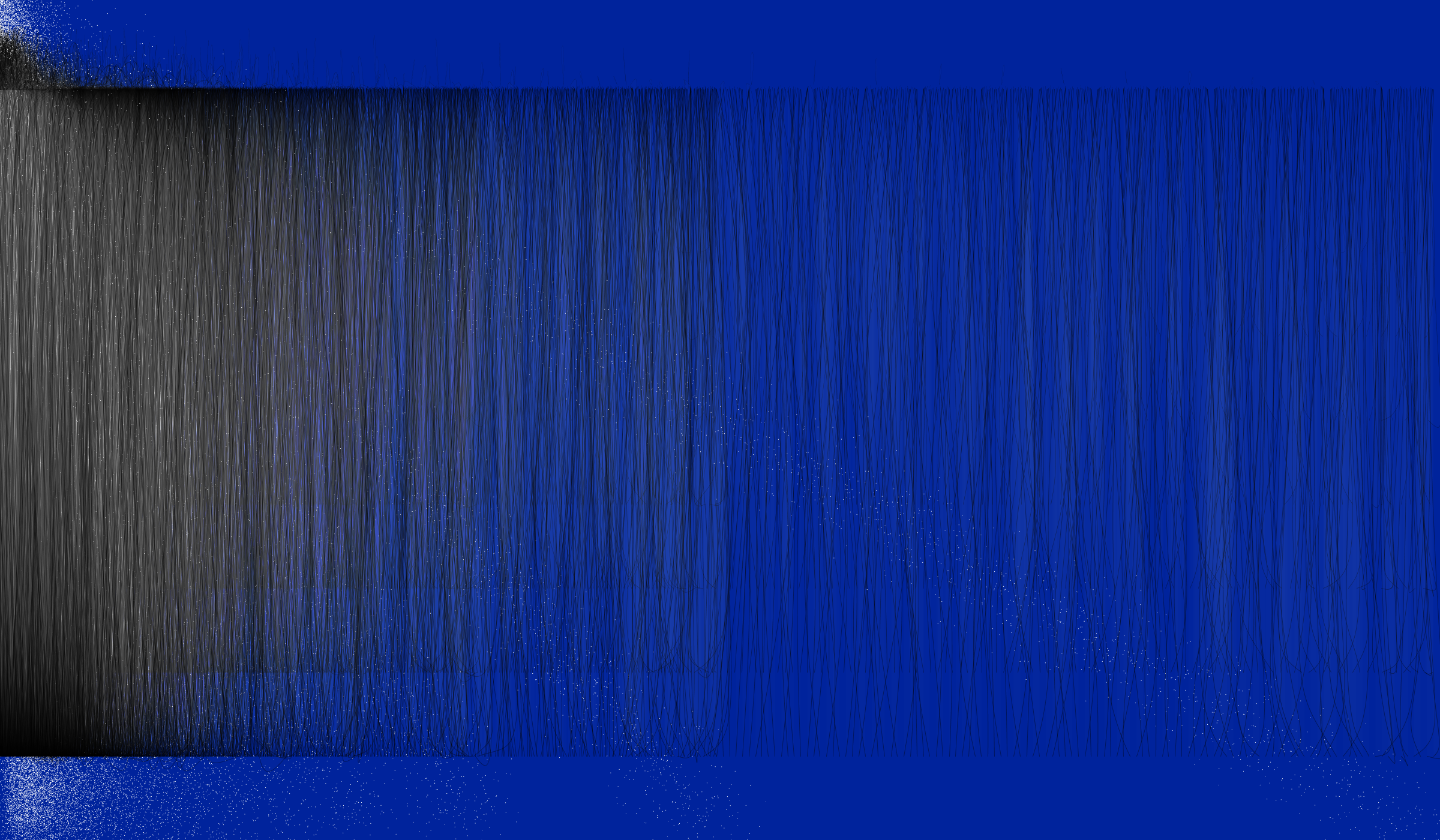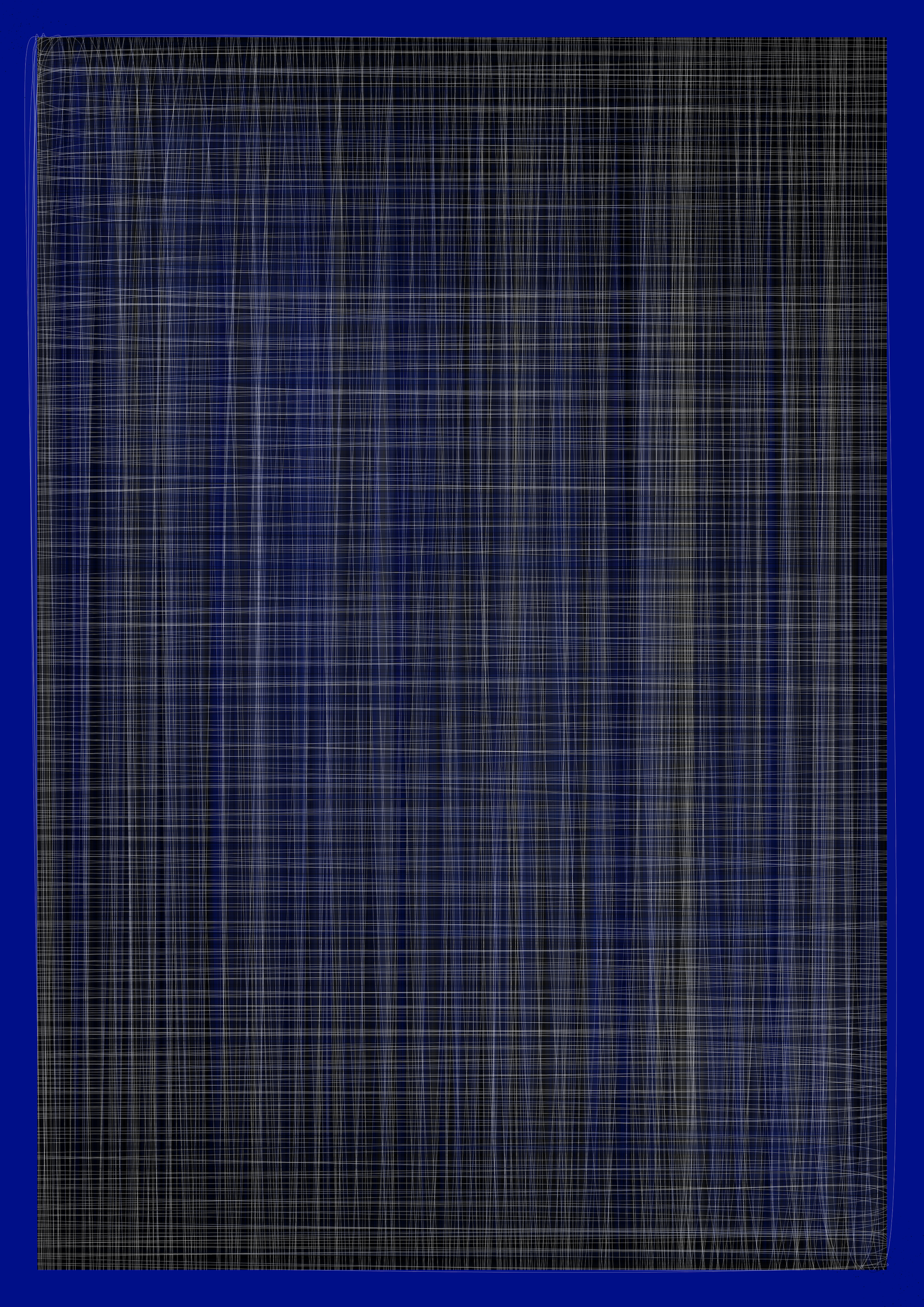Cerberus in Tremolite
produced by: Daniel Evans
ABSTRACT
‘Cerberus in Tremolite’ is a project about liminality and a blurred distinction between the ‘digital’ and the ‘organic’.
The name is a coming together of two very differing concepts.
This fusion is reflected in the idea of the ‘Cerberus’ i.e. an unnatural, mythological creature - a large dog with many heads.
Tremolite is a silicate material, which often forms in hair like fibres. Famous amongst the tremolite family is asbestos, a highly practical material with highly deadly side effects.
Tremolite forms the aesthetic narrative of the pieces, it is what inspired the hair-like structures I generatively produce in code.
People have commented on how these pieces seem to be ‘hand-drawn’, or ‘like real hairs’ and ‘grounded in the physical world’.
By recreating the highly detailed fibrous structure of tremolite within the digital realm I aim to disrupt preconceptions about computational graphics, and indeed about what a think is when it appears ‘organic’.
This is where the Cerberus comes in: as a liminal and unnatural creature it reflects the space ‘in between’ - the creature which we can all recognise in some capacity but whose actual existence is steeped in mythology and fallacy. I have crushed these two concepts together in order to construct a conceptual story. A story in which I make structures that fall between what we know as real, and what we know as not.
TECHNICAL
The hairs themselves are made by drawing many, many thin bezier curves, all with very slight random offsets from one another. These offsets begin at the origin of the line itself, thus producing a very subtle curve. When many of these are layered on top and next to one another it gives the illusion of a highly organic, or hand-drawn structure (one that does not seem made by a computer).
The colours for the piece shown in the video, and the one at the bottom of the page, grew and developed by cellular automata. I did not want this to be too obvious, as the processes by which organic structures grow in nature are not themselves obvious. I often like the software to be a fluid piece of a multifaceted puzzle rather than being the crutch upon which the product relies on. The final renders must work completely by themselves - as a demonstration of computational process and also as ends in themselves.
REFERENCES
I gained a lot of technical knowledge from Daniel Shiffman’s ‘The Nature of Code’ - his way of explaining complex concepts in code is unparalleled
I would also like to thank Lior for developing a fantastic course.
In absence I would also like to thank Florian Hecker and his ‘Chimerizations’ pieces. They inspired me greatly.
The ideas of liminality are also largely inspired from my time as an Anthropology student, particularly in the work of Victor Turner.
--



































































